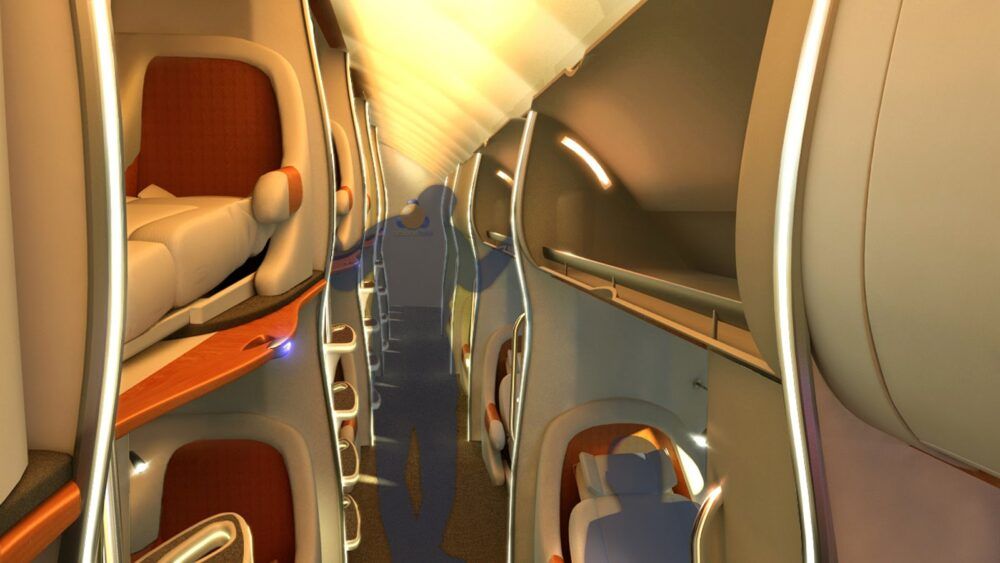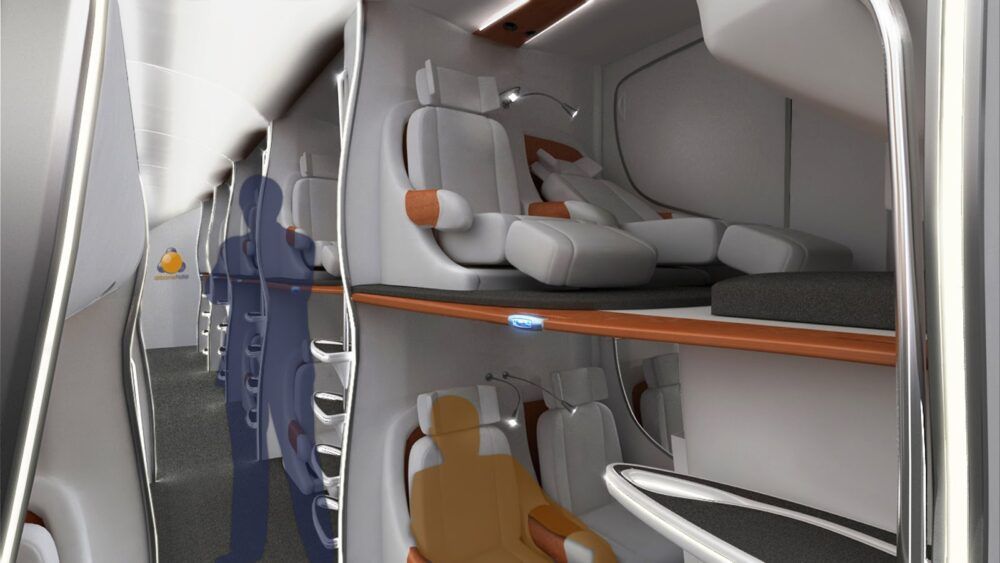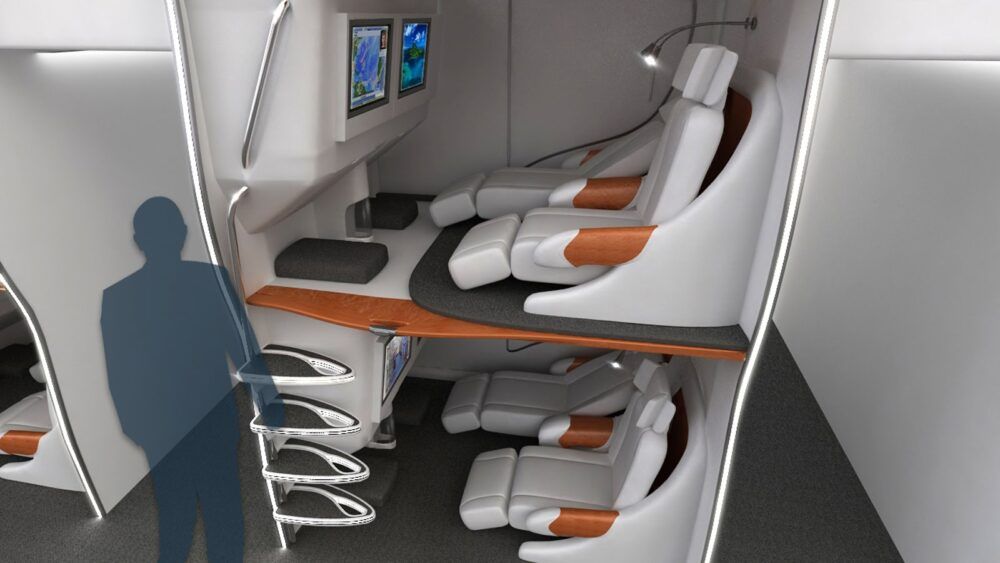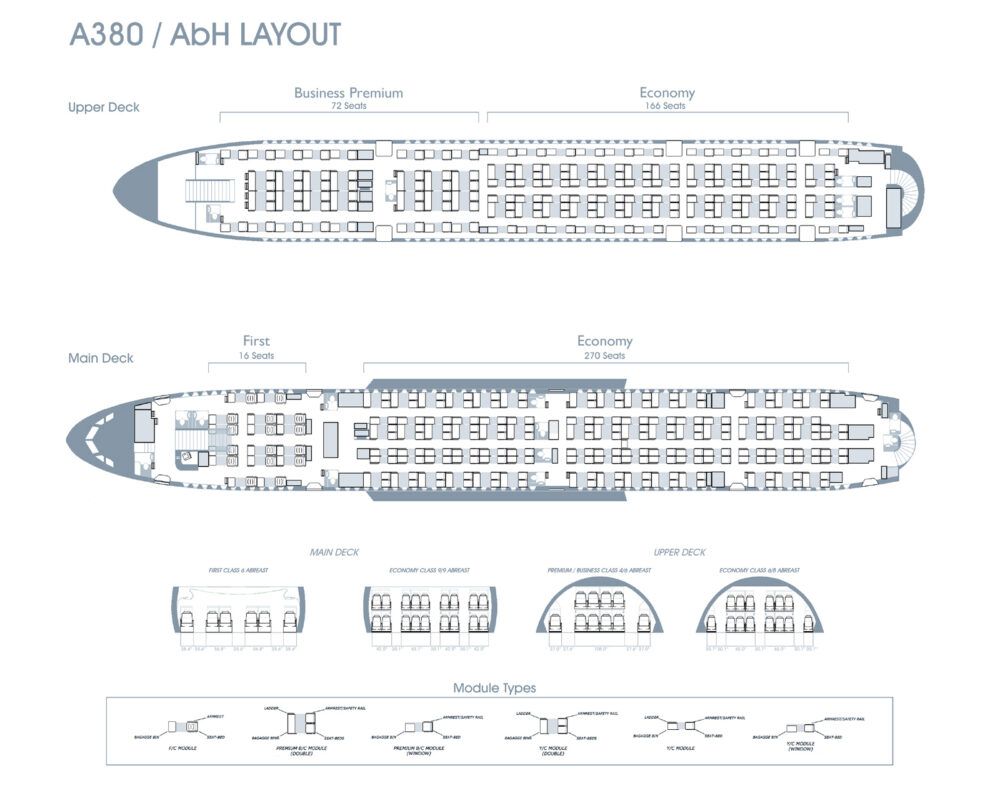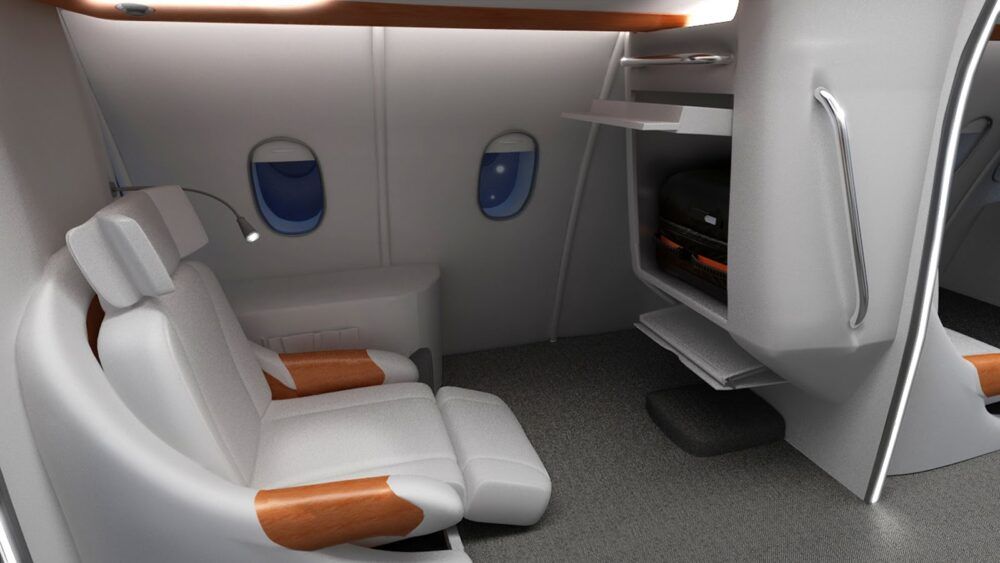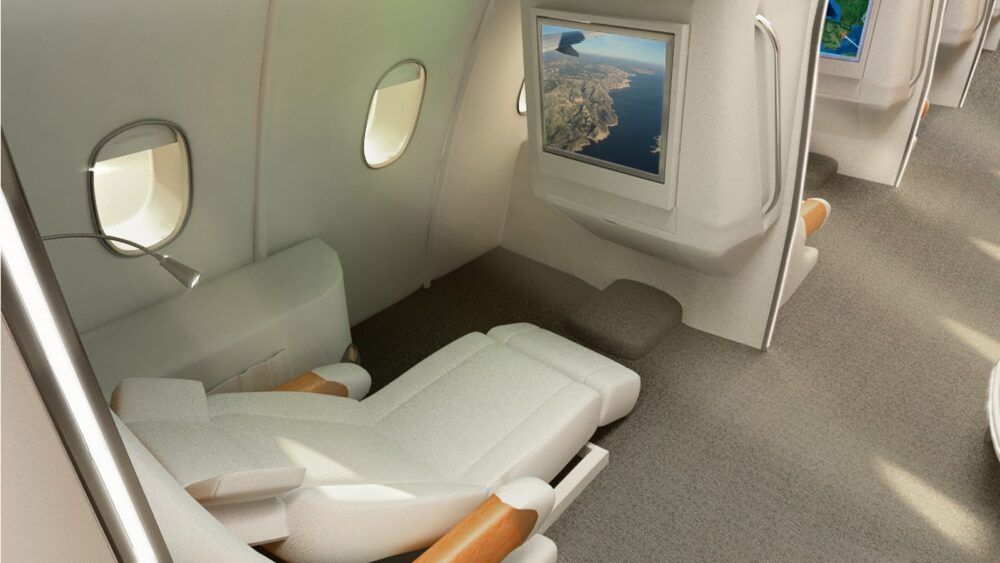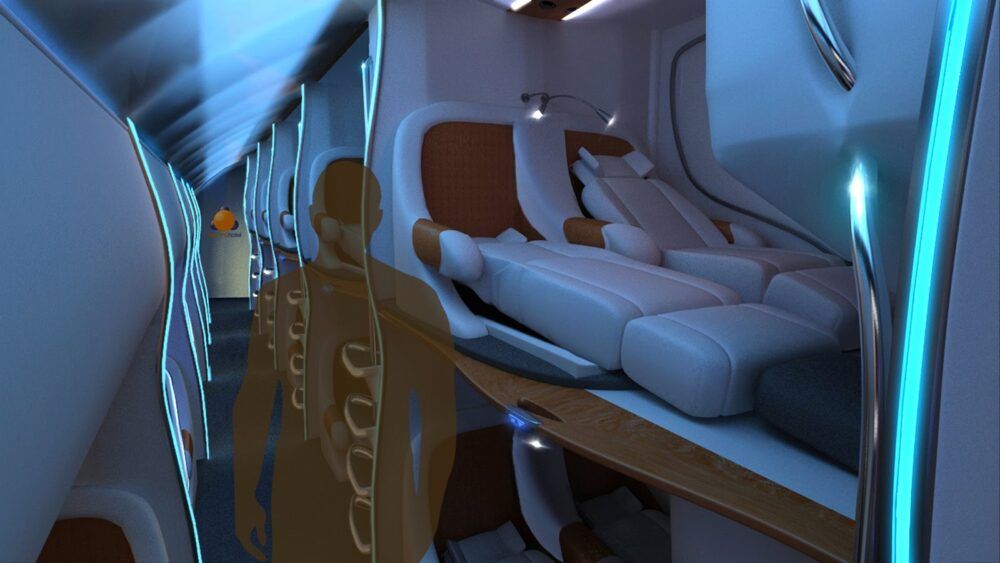With new planes able to go further than ever before, the concept of ultra-long-haul flights is set to continue to gain traction. While many airlines operating such flights already do so in an all-business configuration, the downside of this is that they’ve lost huge amounts of passenger capacity as a result. But what if you could give everyone a lie-flat seat and still take the same number of passengers on that flight? Let’s take a look at the Airborne Hotel.
Why don’t planes use bunk beds?
Have you ever tried to get some shut-eye on a long flight and wondered why no aircraft have bunk beds? Gazing up at all that space above the seat, it’s easy to wonder why no airline has yet put half the passengers on a second tier, giving everyone double the space.
Although we’ve seen some concepts that have suggested this sort of configuration could work, no airline or seat maker has ever taken the idea any further than the drawing board. But ideas like this aren’t new; in fact, back in 2009, when the A380 was a very young bird indeed, designer David Martinez-Celis came up with a concept to maximize all the space available on the shiny new superjumbo.
His concept is called the ‘Airborne Hotel’ and aims to give every passenger a lie-flat seat without the airline losing large amounts of passenger capacity. Designed for the A380, the concept never took off, but even today holds some interesting theories that could well be applied to the ultra-long-haul flights of the future.
Stay informed: Sign up for our daily and weekly aviation news digests.
What’s good about the Airborne Hotel?
Although now 10 years old, the patented concept has some key characteristics that could see it revamped in the future. The system is designed for widebody aircraft and uses as much of the cabin space as possible to give passengers lie flat comfort without sacrificing as much capacity as most of the current designs do.
This is achieved by making full use of all available real estate, both horizontal and vertical. Sure, it means no luggage bins, but by removing this facility, it gives capacity for four passengers in the usual floor space of two. Passengers would access the upper seats via an integrated set of steps and handrails.
The really unusual feature of this design concept is that it does not rely on a twin-aisle arrangement, but rather a triple aisle configuration. The designer suggests 16 seats in first, with a six abreast layout in a 1-2-2-1 configuration. These are not double-decker, so the passengers have more space.
In the economy cabin, the seats are arranged in a nine-abreast layout. This places seats in a 2-3-2-3 arrangement, with aisles of 20.1 inches between each seat group.
On the upper deck of the A380, the concept suggests a business class of four or six abreast to allow for the curvature of the roof. These would include a single seat by each window and then a group of four in the middle, in the double-deck arrangement. An economy class using the upper deck would feature the same single window seat, but then two groups of three seats making for up to eight on each row.
All the seats lie flat and are able to be operated by the passenger without intervention from the cabin crew. On the upper deck, the armrests slide forward to become a safety rail when the bed is in lie-flat mode.
It’s a design reminiscent of the old Douglas DST sleeper planes, which also allowed passengers to sleep on top of one another. It’s an interesting concept, but there would be some significant hurdles to certification, particularly in regard to evacuation speed. The biggest hurdle, of course, is that the concept was originally designed for the A380, which is nearing the end of its useful life.
Nevertheless, the lack of bunk beds on passenger planes has been one of the most frequently asked questions. Perhaps, in the future, with the rise in popularity of ultra-long-haul flights, we will see something like the airborne hotel in action.


